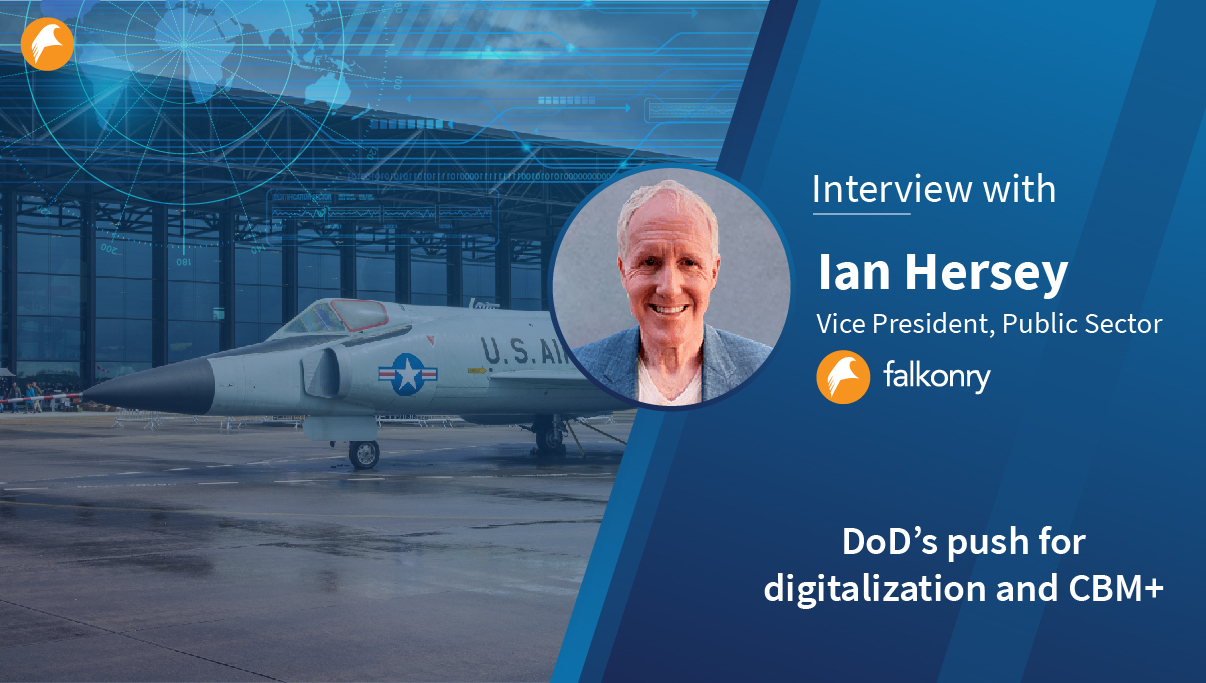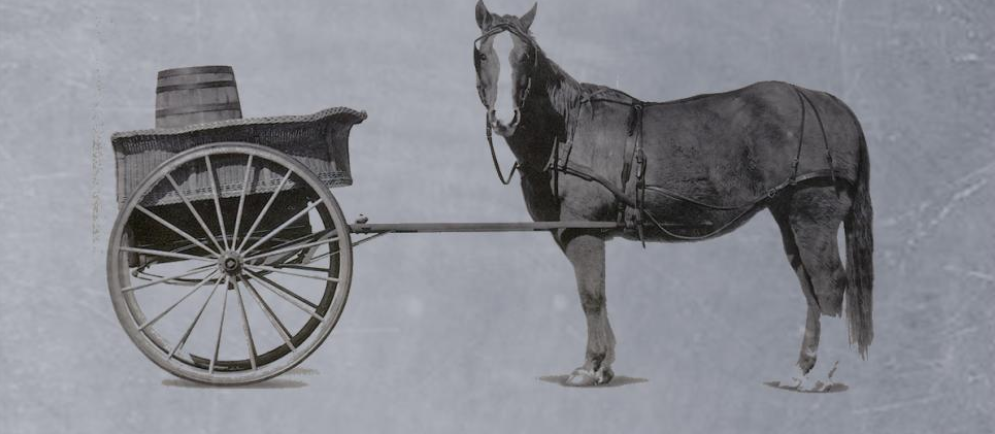Use AI to differentiate between earthquakes and underground explosions
Key takeaways:
- Time series AI can be used to classify temporal patterns within seismographic data to distinguish between explosions and naturally occurring earthquakes.
- It is able to produce unsupervised models that have the capability of generating clusters corresponding to normal conditions, known events, and unknown – potentially interesting – phenomena.
- By analyzing the infrasound data it can produce unsupervised models that have the capability of generating clusters corresponding to earthquakes, icequakes, underground nuclear tests, large strip mine blasts, etc.
- Using the transfer learning capabilities of time series AI, the model needs to only learn once using the data from one seismic station but can be applied to other identical stations across the globe.
Seismology is one of several fields that plays a role in monitoring the Comprehensive Test Ban Treaty. Underground nuclear explosions produce seismic waves with unique characteristics that allow the discrimination between explosions and earthquakes. A seismic signature of each event is identified by a distinctive ground-motion signal with a unique amplitude and frequency.
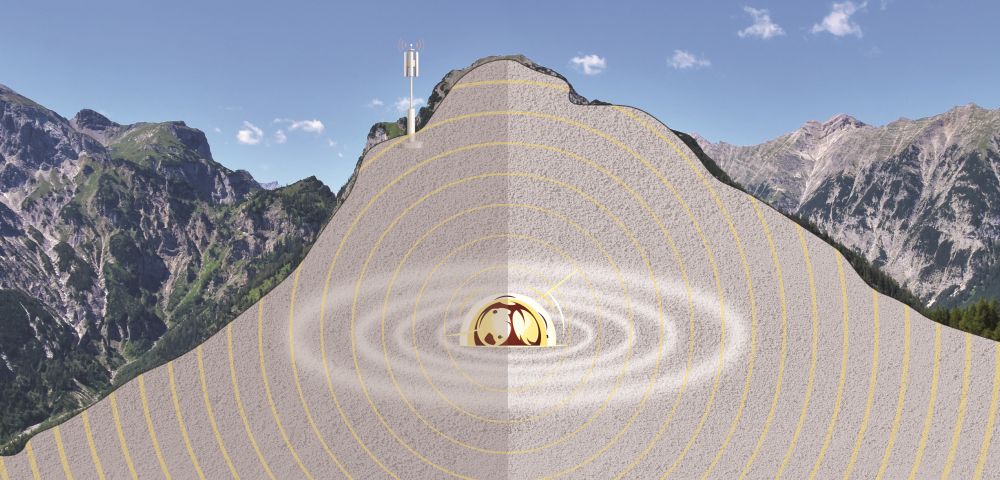
There are 150+ seismographs deployed across the globe as part of Global Seismographic Network (GSN) a cooperative partnership between IRIS and USGS – with a global state of the art seismic network that measures and records all seismic vibrations possible from high-frequency, strong ground motions near an earthquake to the slowest global Earth oscillations excited by great earthquakes. GSN publishes this measurement/data in real-time (open access) data through IRIS. Furthermore, the International Seismological Center (UK-based organization) maintains a register of more than 26,000 seismograph stations under the International Registry of Seismograph Stations, which is managed by ISC and the World Data Center for Seismology.
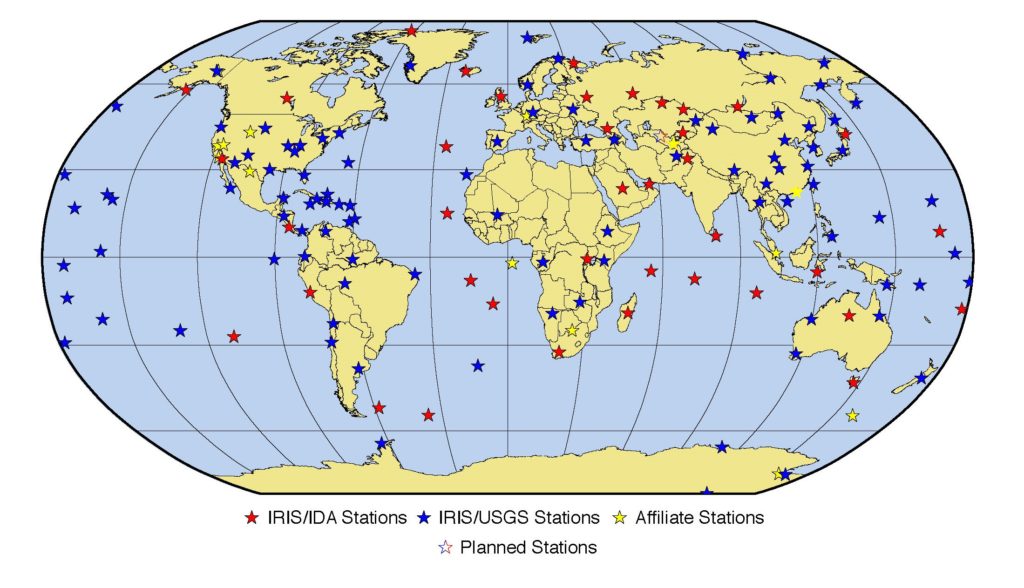
Each station measures the earth’s movements to detect and capture either naturally occurring earthquakes or man-made explosions that cause the earth to move. Such seismic measurements can be converted into infrasound data to learn the hidden patterns that may represent natural earthquakes or man-made underground nuclear explosions, large strip-mine blasts, atmospheric explosions, gas pipeline ruptures, rocket launches, orbital (and sub-orbital) vehicle re-entry, meteorite injection, and aircraft sonic booms, etc.
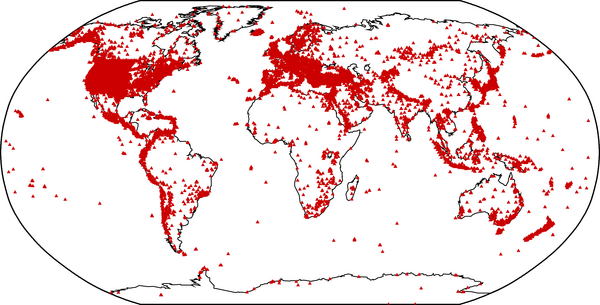
While, for example, the seismic network is intended to primarily detect events from underground sources, it is found that these stations are sometimes capable of detecting underwater or atmospheric sources based on the conversion of hydroacoustic or infrasonic energy into seismic waves. In the same way, the other (waveform) technologies are sometimes capable of receiving signals that are generated from the conversion of seismic energy. In particular, the phenomenon of seismic ground motion being converted to infrasound was observed on numerous occasions.
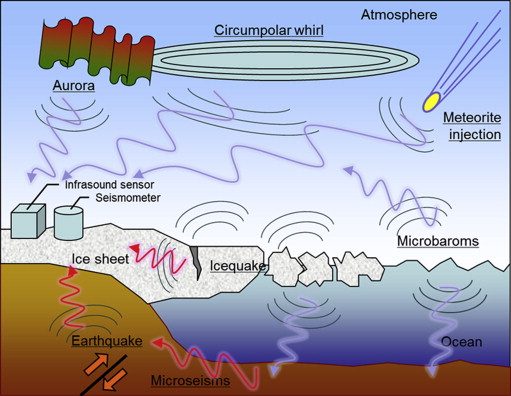
Given this information, we set out to conduct a proof-of-concept experiment to test our hypothesis with Falkonry’s time series AI. One of the goals of running the seismic and infrasound data through our time series AI was to explore its capabilities – both as a discovery as well as a classifier tool. We wanted to look at both seismometer and infrasound station readings over periods of time in which an event was known to have occurred (and seen by a seismograph station), and perform unsupervised clustering to see which patterns naturally emerge, including those that overlap with the ground truth events. The AI would then potentially be able to compare discovered patterns and event classification performance between seismometer and infrasound sources. Eventually, we could also leverage the transfer learning capabilities of the AI to learn from one station and apply it to other identical stations across the globe.
What we found: Earthquakes vs Underground Explosions
This experiment, as evident from figure #1 below, shows that a general-purpose time series AI technology when applied to non-industrial use cases, can produce equivalent results from an unsupervised AI model that looked at the infrasound signal over the duration of 2 hours of normal condition. As you may notice, there is no ground truth provided to this model and it is able to detect anomalous behavior (red bands) when the infrasound value peaks. The system is able to confidently detect this behavior, which is a clear deviation from the normal. To verify this, we used this AI model learnt using the station #1 data and apply it directly on the station #2 dataset.
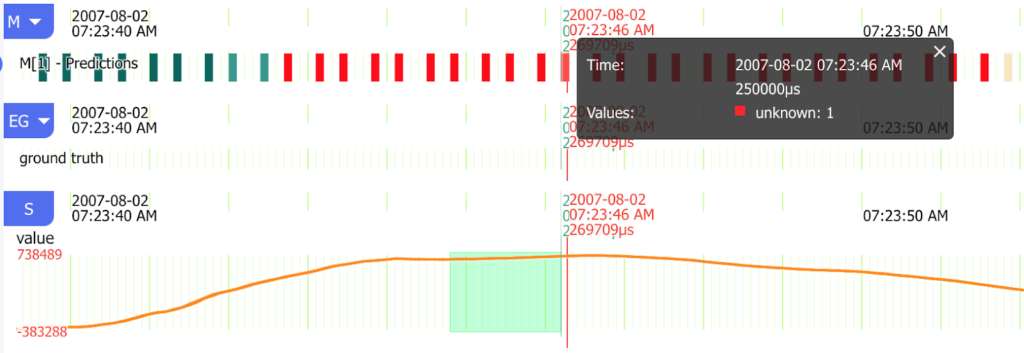
Figure #2 below shows that it is possible to transfer learning to a different but identical station and detect the similar behavior in the new dataset that aligns with the ground truth, which corresponds to the spike in infrasound data from station #2.

For the seismic activity first detected at seismograph station #1 to reach the next seismograph station #2 will undergo amplitude attenuation and there will be a time delay that is approximately proportional to the distance between the two stations. This time shift in detecting the seismic activity at station #2 will be recorded at a time t0+. An advanced time series AI technology would show the signals from different stations alongside each other but the events are time-shifted and the second signal will have amplitude attenuation.
Similarly, time series AI models can be trained to discover, detect and predict other events like underground nuclear explosions, rocket motor thrusts when launching space shuttles, missiles, etc. The acoustic, or hydro-acoustic data can be converted into, say CSV format, and used to learn different behaviors. When time series AI technologies can detect patterns across multivariate systems, it also provides the users with some measure of confidence to trust the detection. Further, a sign of a mature AI technology is one that can comprehensively explain the patterns it detects to aid in root cause analysis.
Falkonry’s time series AI can also detect any unusual patterns that have not been seen before and classify them as novels, which may be a precursor to a failure or an undesired event or system behavior. These are sent as alerts to the asset and operations managers. When new behaviors are detected the system provides (see the red vertical bars in Figures 1 & 2 above) means to label them so that it could improve the classifier in the next iteration of model learning. Further, the system is capable of automatically triggering the learning process using the new labels. Once a satisfactory AI model is available it can be deployed on the edge for real-time monitoring in the field. Alternatively, the source of raw data may be connected to the system for near-real-time monitoring at a central location.
Conclusion
Our experiment with seismological data successfully demonstrated the ability of Falkonry’s time series AI to produce unsupervised models that have clusters corresponding to normal conditions, known events, and unknown – potentially interesting phenomena – using both seismic and infrasound data. The unsupervised models are valuable as a discovery tool and as a tool for identifying potential phenomena in need of labeling in order to improve the semi-supervised models. Lastly, the ability of the time series AI to learn once and apply the AI model on multiple identical stations with ease can lead to rapid scaling. This technology could have far-reaching effects in the defense and intelligence domain.
To know more about our technology and its applications contact us for more information.

